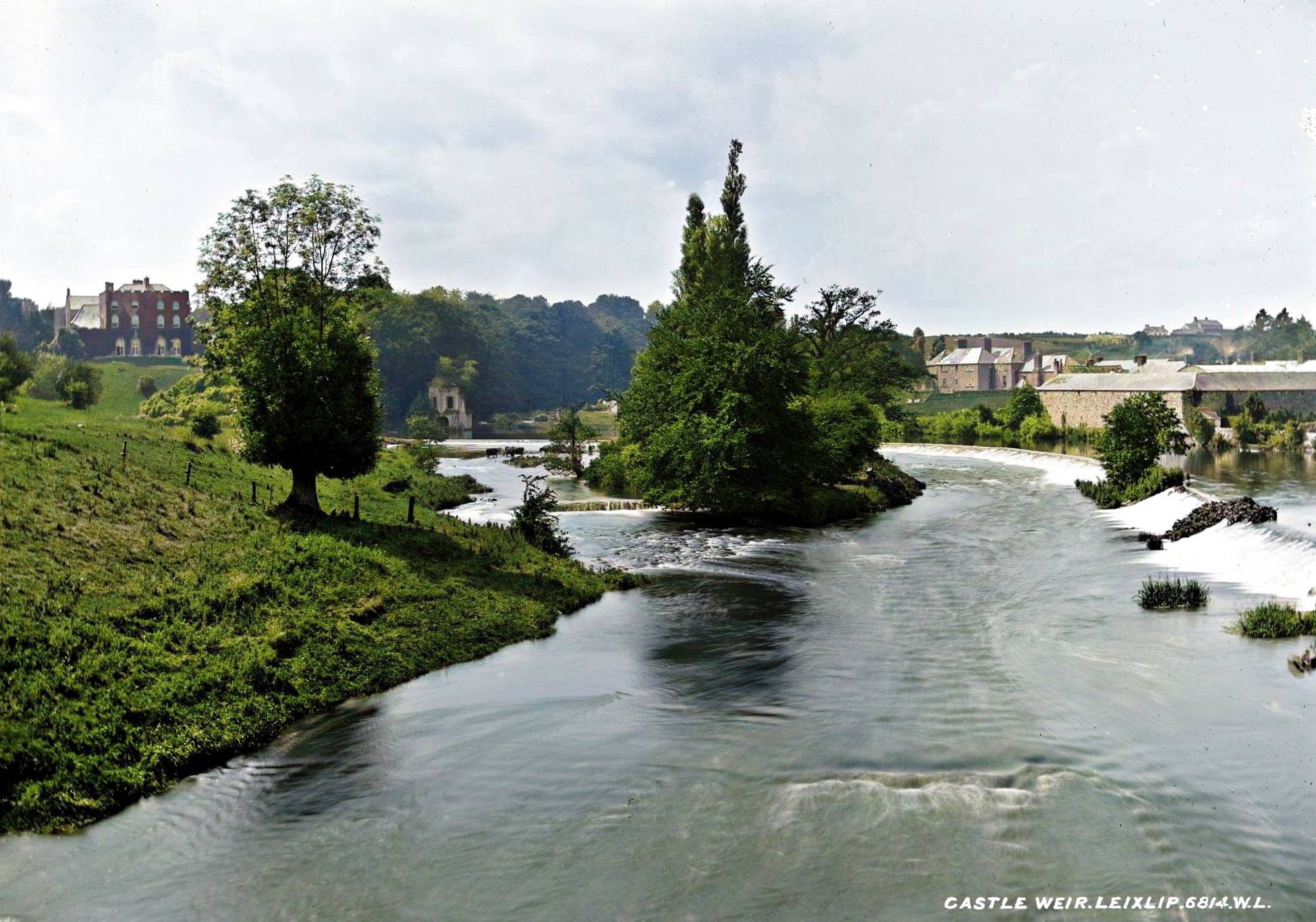Leixlip Castle, Leixlip, Co. Kildare
Just south of where the River Liffey meets the Rye Water stands Leixlip Castle, a medieval fortress that has been continuously inhabited for over 800 years.
Leixlip Castle, Leixlip, Co. Kildare
The castle’s history stretches back to before 1212, when Adam de Hereford held the manor and maintained what he called his castle of ‘Hernie’ or ‘Ernia’, complete with its own grange and Chapel of St. Patrick. Though the original fortification may have been a simple motte, by the early 13th century it had evolved into a more substantial structure. The manor passed through various hands over the centuries; from Adam’s son Stephen to the Pippard family around 1252, then to the Crown in 1302, when improvements included the construction of a new kitchen and a limekiln for producing building materials.
The castle’s ownership tells the story of medieval Irish politics and power. After Ralph Pippard surrendered it to King Edward I, it was held briefly by John de Grauntsete before passing to the Knights Hospitaller, who controlled it for over a century. The turbulent Tudor period saw it granted to Gearóid Mór, 8th Earl of Kildare, in 1496, only to be forfeited following the rebellion of his grandson, Silken Thomas, in 1536. After changing hands several more times, it was granted to Sir Nicholas White in 1507, whose family retained it until the 18th century.
Today’s castle is an architectural patchwork reflecting its long history. The oldest surviving portions include a circular tower at the northwest corner, sitting on a battered plinth and rising three storeys with an internal diameter of 6.7 metres and walls averaging 1.2 metres thick. Adjacent to this is a rectangular hall measuring approximately 14 metres east to west and 5.5 metres wide internally. A narrow room above the main hall is still known as the chapel, perhaps echoing that original Chapel of St. Patrick mentioned in Adam de Hereford’s grant. The east wing dates to the mid-18th century, whilst the main staircase and the bolection mouldings in the chapel may be late 17th century work. Modern additions on the south side and the insertion of sash windows have adapted the castle for contemporary living, ensuring this remarkable building remains a home rather than a ruin.
Good to Know
Tags
Visitor Notes
Added by
IrishHistory.com
Bence-Jones, M. 1978 Burke’s Guide to Country Houses: Volume 1 Ireland. London. Burke’s Peerage Ltd.
Bradley, J., Halpin, A., and King, H.A. 1986 Urban Archaeological Survey – County Kildare (4 vols.). Unpublished report commissioned by the Office of Public Works, Dublin.
Guinness, D. and Ryan, W. 1971 Irish houses and castles. London. Thames and Hudson.






